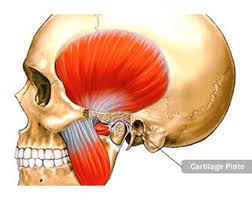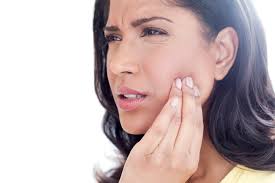 Temporomandibular joint (TMJ) pain can be a debilitating condition affecting the jaw joint and surrounding muscles. The TMJ plays a vital role in everyday activities such as chewing, speaking, and yawning. When this joint becomes dysfunctional, it can lead to a range of symptoms that can significantly impact a person’s quality of life. In this short post, we will explore the anatomy, symptoms, causes, treatments, and exercises to manage TMJ pain effectively.
Temporomandibular joint (TMJ) pain can be a debilitating condition affecting the jaw joint and surrounding muscles. The TMJ plays a vital role in everyday activities such as chewing, speaking, and yawning. When this joint becomes dysfunctional, it can lead to a range of symptoms that can significantly impact a person’s quality of life. In this short post, we will explore the anatomy, symptoms, causes, treatments, and exercises to manage TMJ pain effectively.
Anatomy: The temporomandibular joint is a hinge joint that connects the jawbone (mandible) to the temporal bone of the skull. It is located just in front of the ear on both sides of the face. The TMJ consists of a rounded end of the mandible, known as the condyle, which fits into a socket in the temporal bone. Between these structures, a small, shock-absorbing disc called the articular disc helps with smooth movement of the joint.
Common Symptoms: TMJ pain can manifest in various ways, and individuals may experience one or more of the following symptoms:
- Jaw pain or tenderness, particularly in the joint area.
- Difficulty or discomfort while chewing, speaking, or opening the mouth wide.
- Clicking, popping, or grating sounds when moving the jaw.
- Locking of the jaw, making it difficult to open or close the mouth.
- Headaches, earaches, or facial pain that may radiate to the neck and shoulders.
- Swelling on the affected side of the face.
 Common Causes: The exact causes of TMJ pain are not always clear, but several factors could contribute to its development, including:
Common Causes: The exact causes of TMJ pain are not always clear, but several factors could contribute to its development, including:
- Jaw misalignment or structural issues with the joint.
- Excessive teeth grinding or clenching, known as bruxism.
- Trauma or injury to the jaw joint or surrounding muscles.
- Arthritis or inflammation of the joint.
- Stress and tension leading to increased muscle tightness.
Treatments: Managing TMJ pain often requires a multidisciplinary approach, involving the expertise of physiotherapists, dentists, and other healthcare professionals. The following treatments are commonly used:
- Self-care practices: Applying heat or cold packs, eating soft foods, avoiding extreme jaw movements, and practicing stress management techniques can provide relief.
- Medications: Over-the-counter pain relievers, muscle relaxants, and anti-inflammatories may be prescribed to alleviate pain and reduce inflammation.
- Oral appliances: Dentists may recommend using a splint or a mouthguard to stabilize the jaw joint and prevent teeth grinding.
- Physiotherapy: techniques such as massage, joint mobilizations, dry needling, jaw exercises, and stretches to improve jaw function and reduce pain.
- Injections: In some cases, corticosteroid injections into the TMJ can provide temporary pain relief.
Exercises: Engaging in targeted exercises can help manage TMJ pain and improve jaw function. Here are a few exercises commonly recommended by MGS physiotherapists:
- Jaw opening and closing: Gently open your mouth as wide as you comfortably can and then close it. Repeat this movement several times.
- Resisted mouth opening: Place your thumb under your chin and apply gentle resistance as you open your mouth against the pressure. Hold for a few seconds and then release. Repeat this exercise multiple times.
- Jaw side movements: Slowly move your jaw from side to side, ensuring you keep your teeth slightly apart.
- Chin tucks: Sit or stand with your shoulders back. Gently retract your chin, bringing it backward without tilting your head. Hold for a few seconds and repeat.
- Tongue-to-palate exercises: Press your tongue firmly against the roof of your mouth and hold for a few seconds before releasing. Repeat several times throughout the day.
TMJ pain can significantly impact daily life. But with proper understanding and management, individuals can find relief and improve their jaw function. If you’re experiencing TMJ pain, it’s essential to consult with a healthcare professional who can provide an accurate diagnosis and recommend appropriate treatments and exercises. By taking a proactive approach to manage TMJ pain, you can regain control of your jaw health and improve your overall well-being.
Author –  Elliott Lang (North Curl Curl)
Elliott Lang (North Curl Curl)
With a sporting background as a competitive javelin thrower with a degree in Exercise and Sports Science – Elliott is uniquely skilled in the intricacies of diagnosing, managing and rehabilitating sporting injuries. This especially applies to overhead sports such as throwing, tennis, swimming, and golf.
He loves playing golf – and currently has a handicap of 12 and hoping to get below 10 by the end of the year!
You can see Elliott running along Curl Curl beach in his lunch breaks trying to get my fastest 5km time
Click here to learn more about Elliott.
